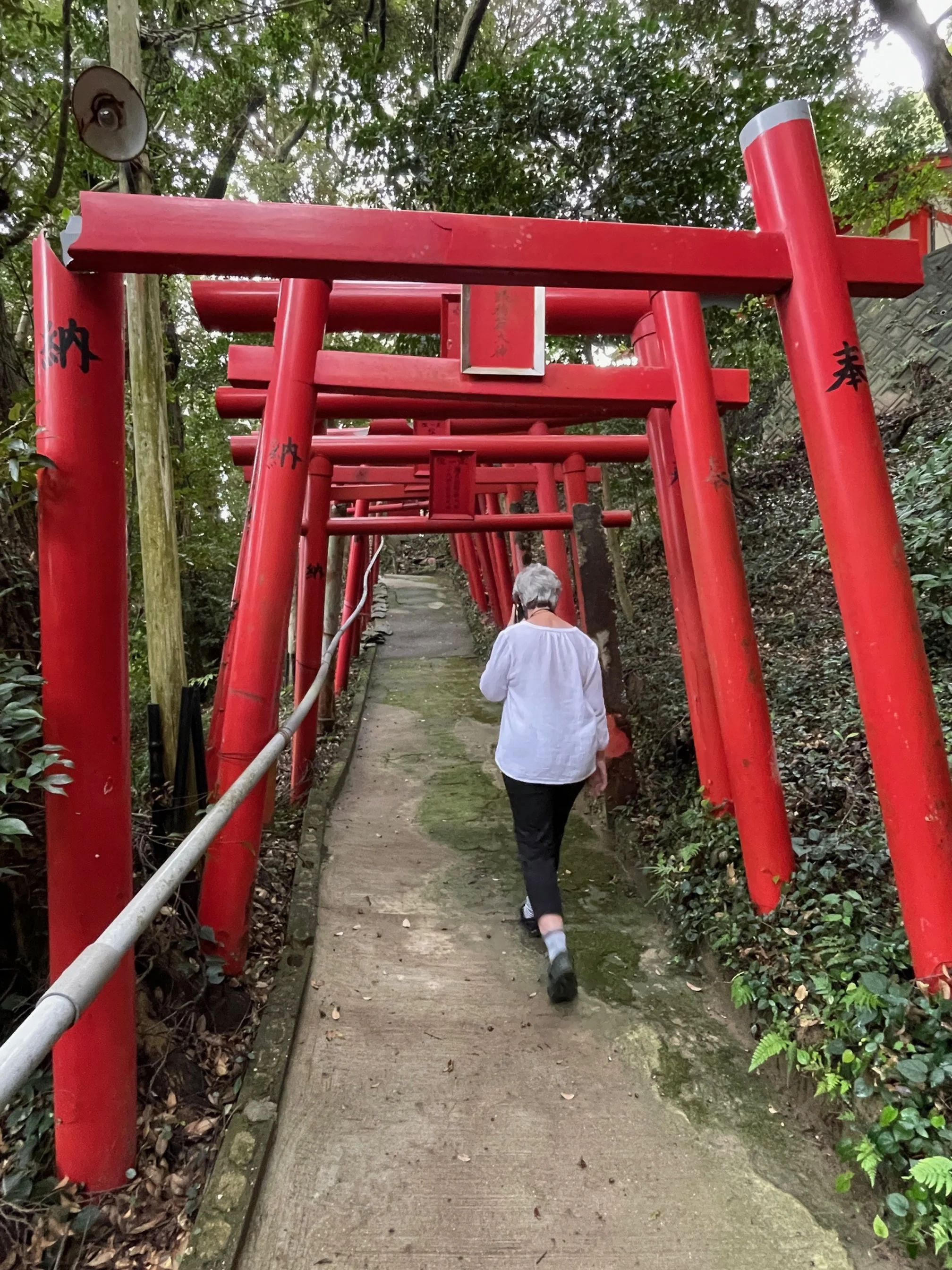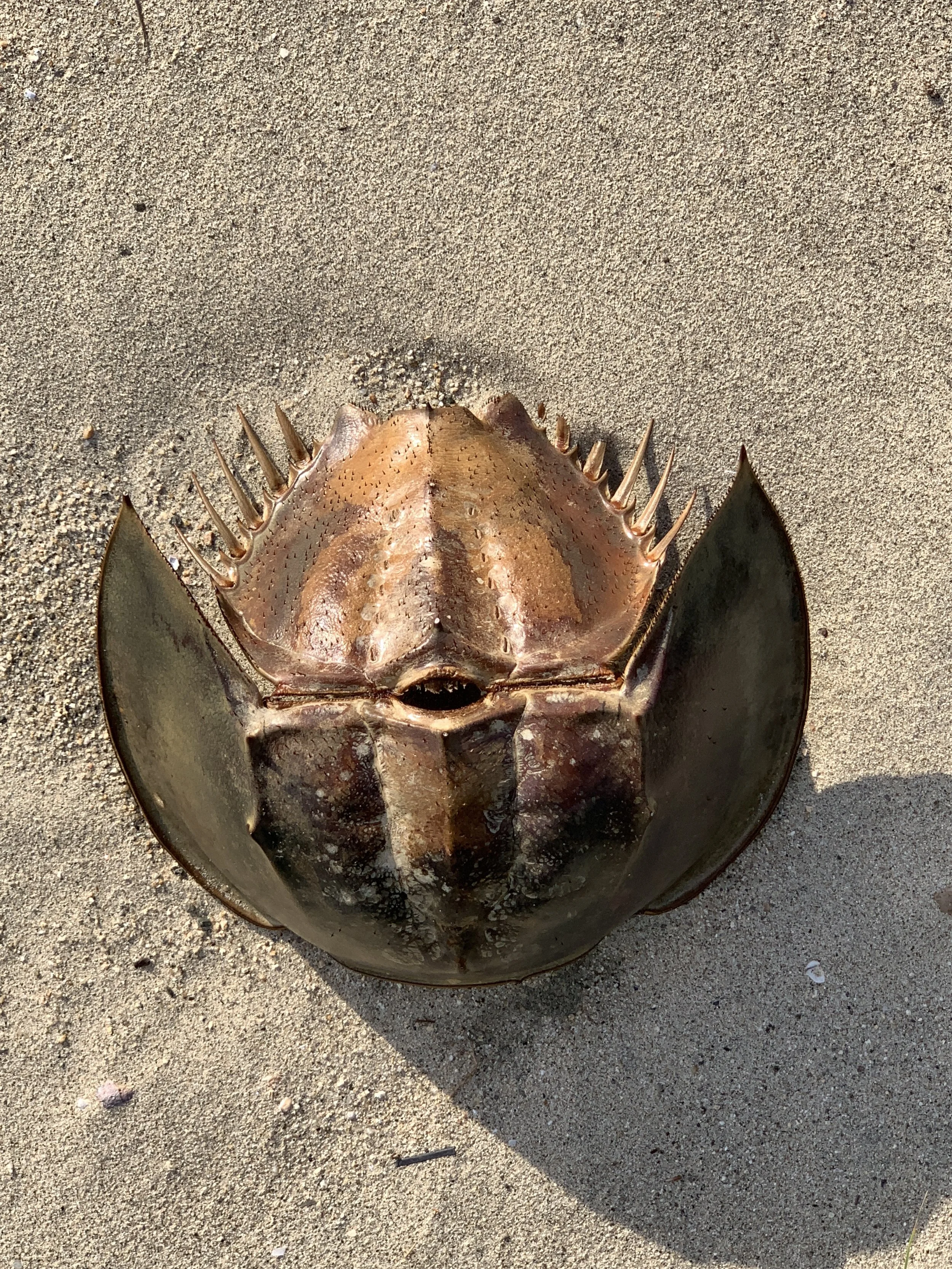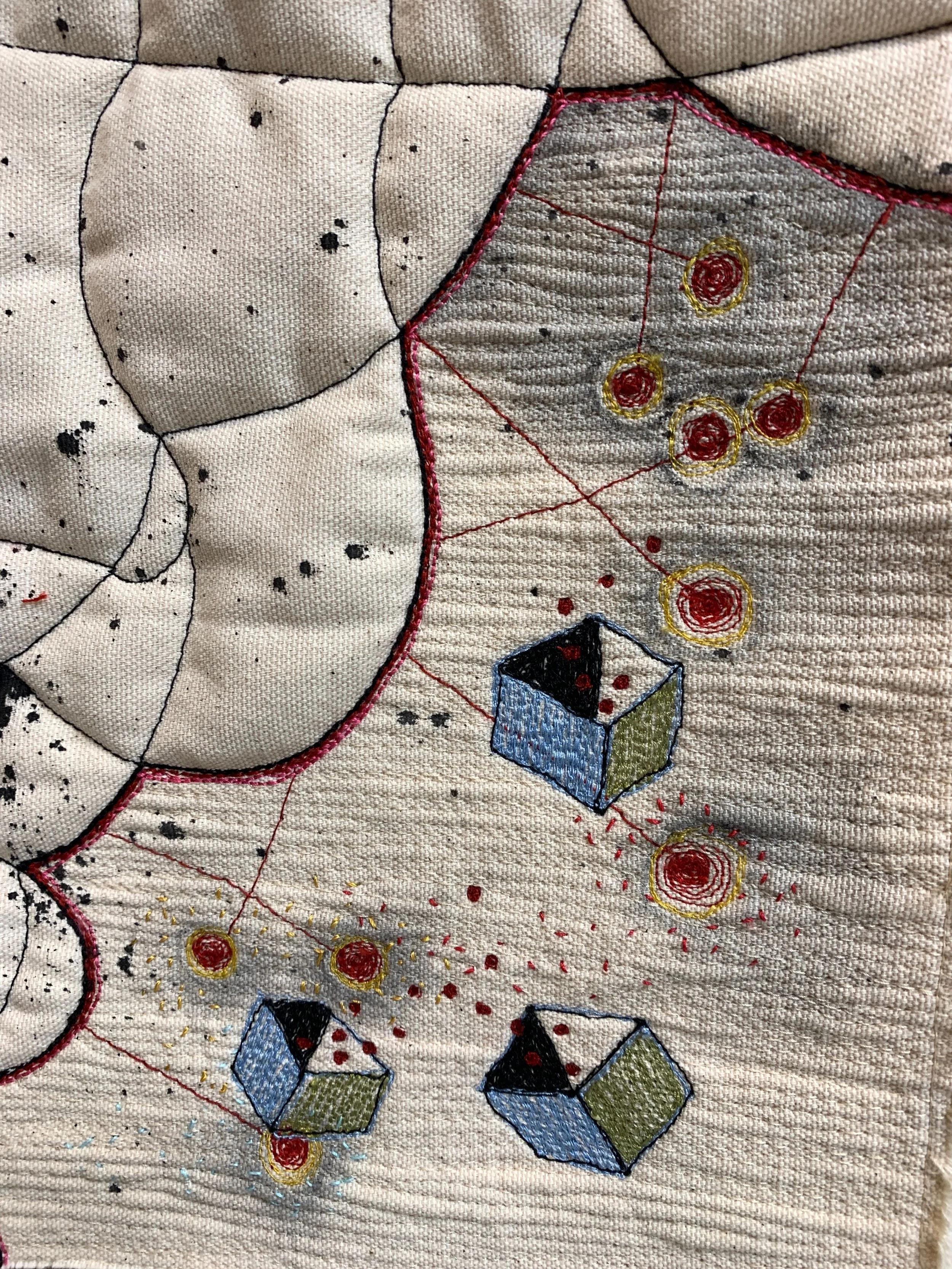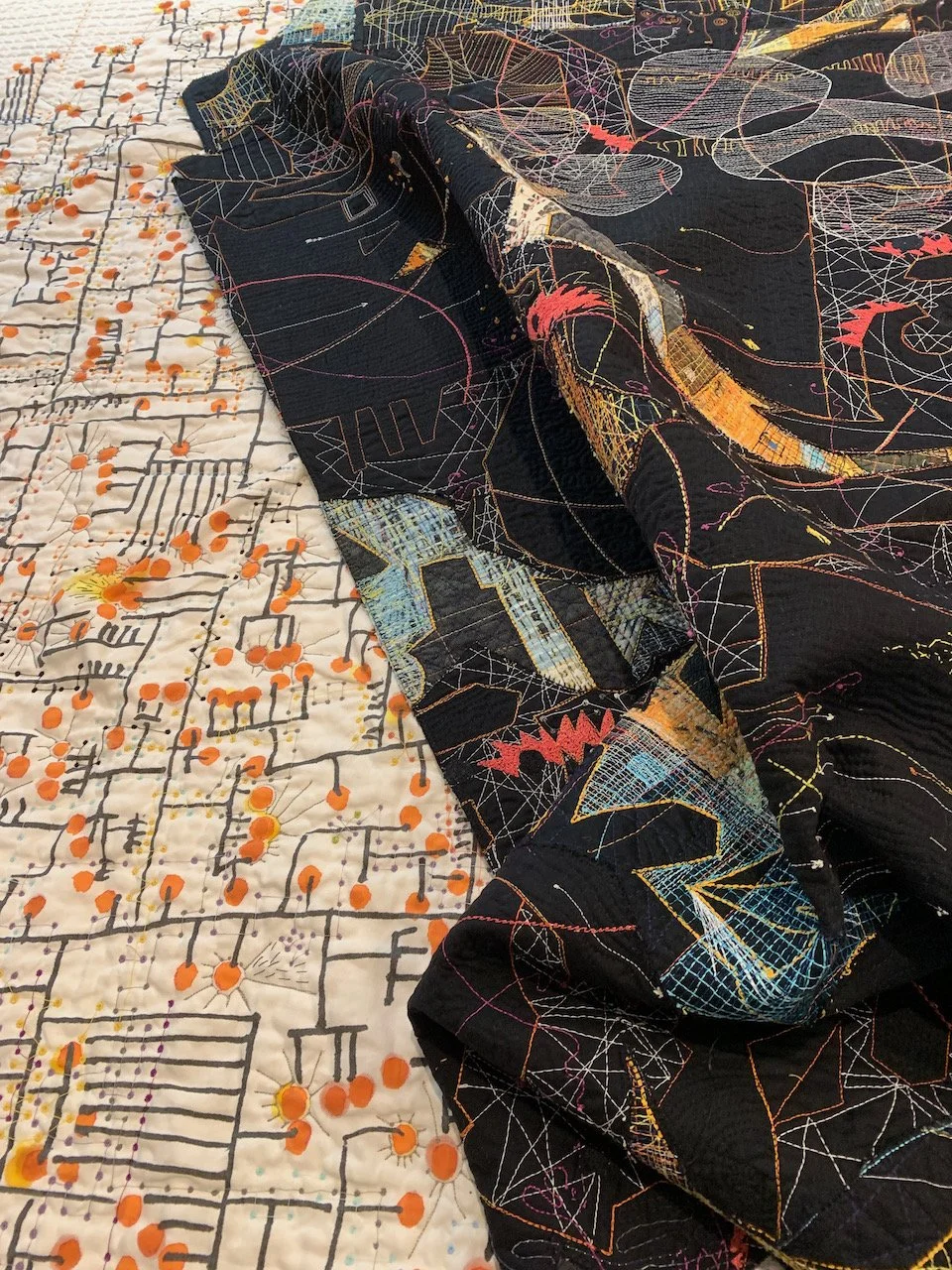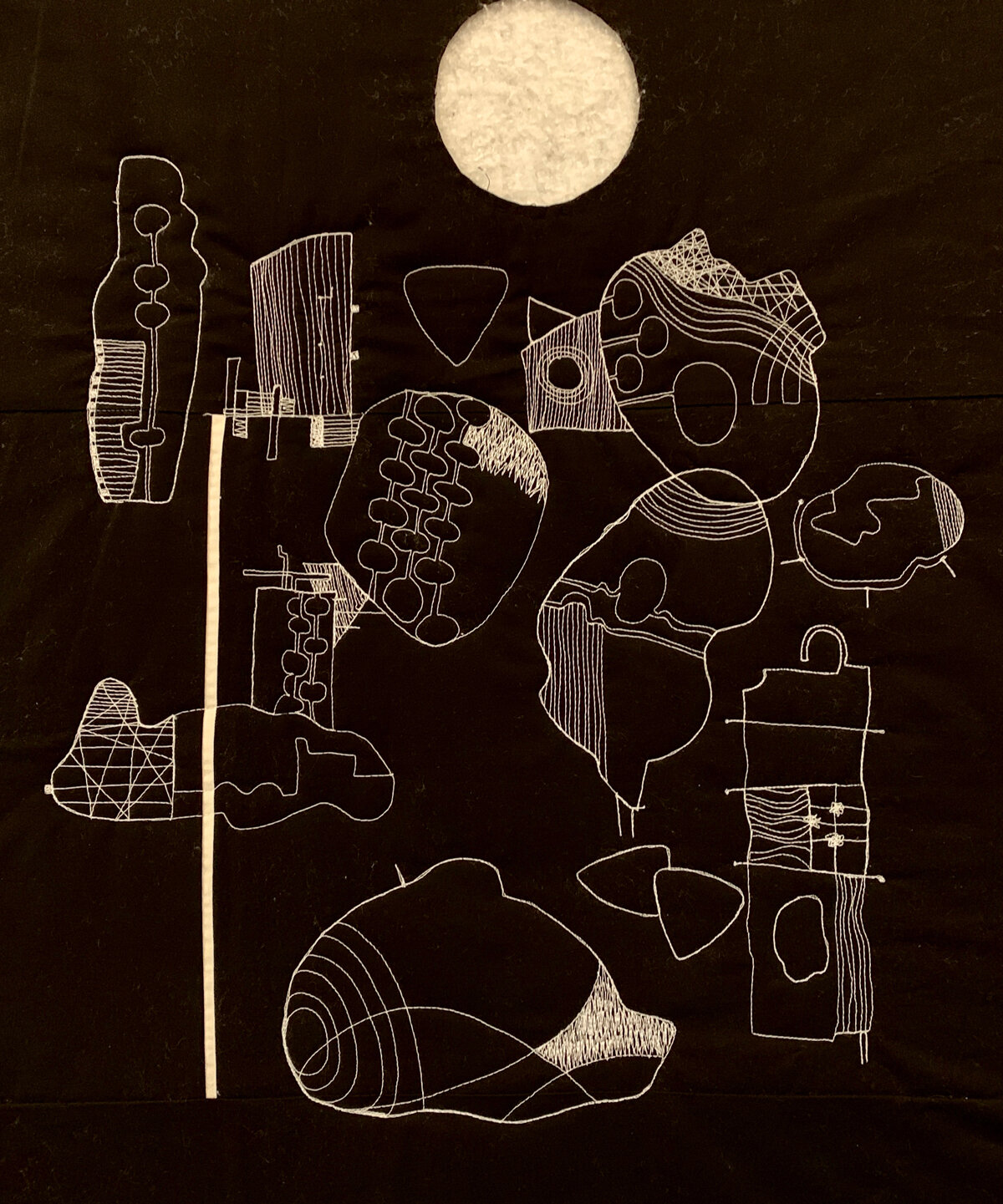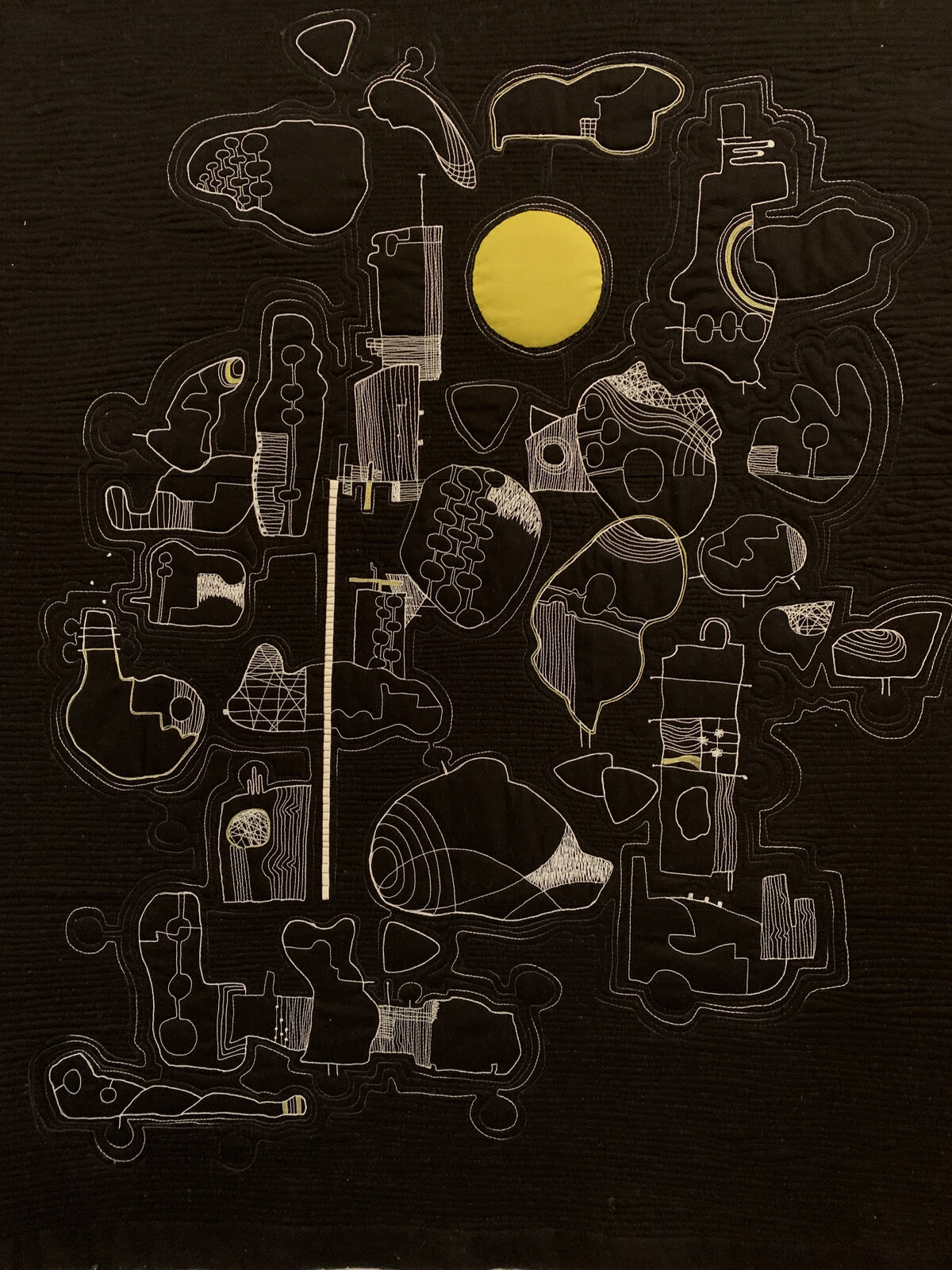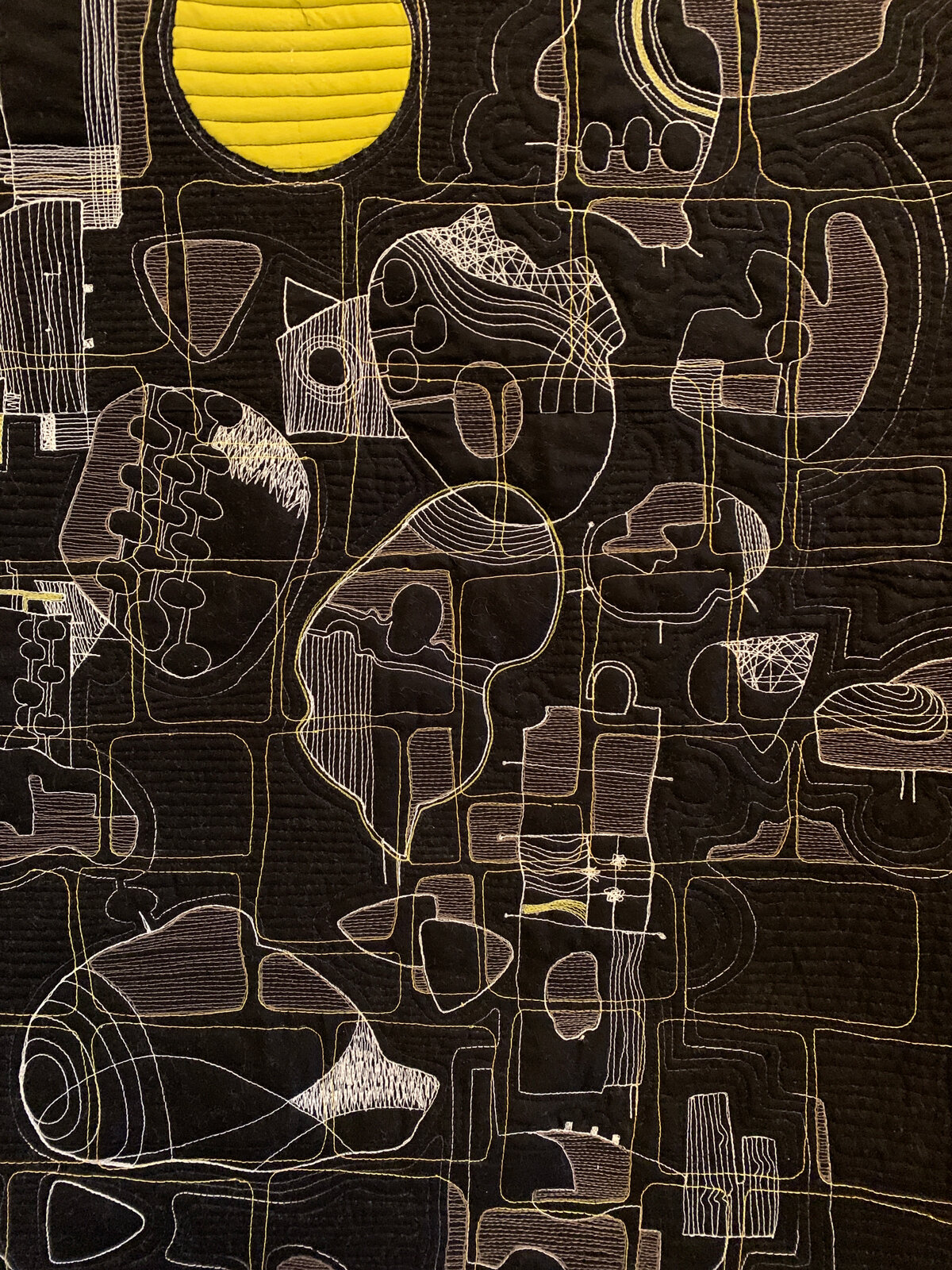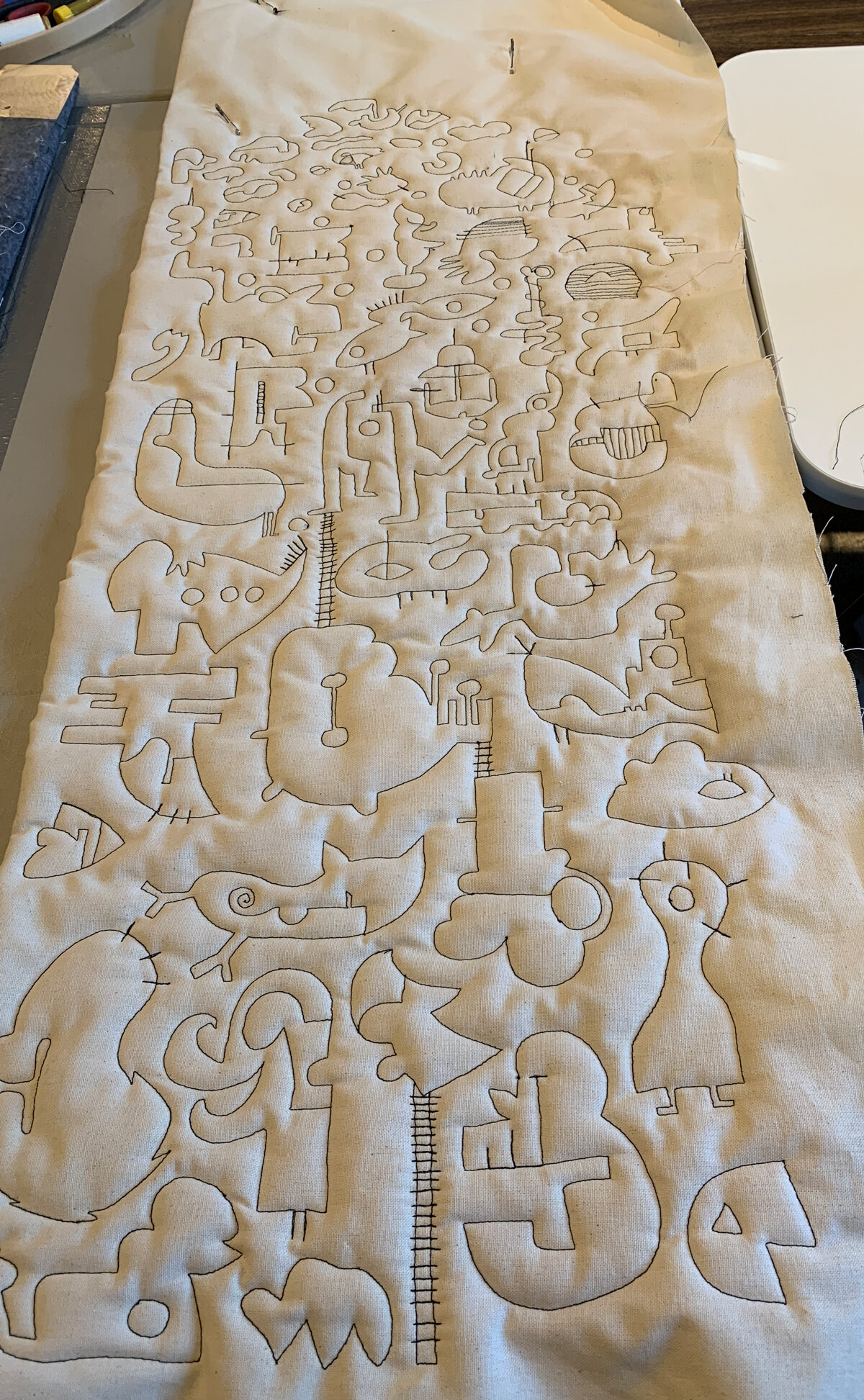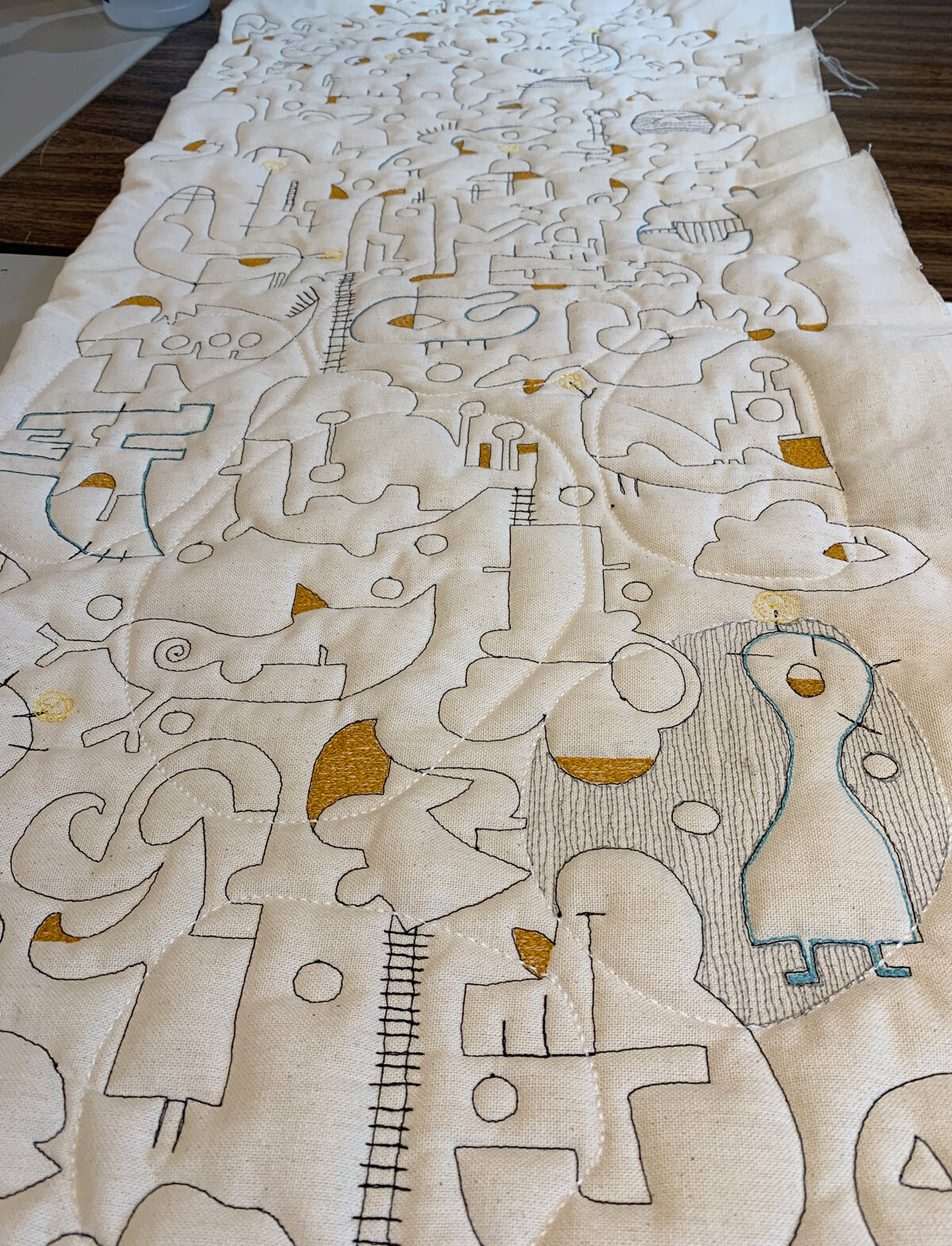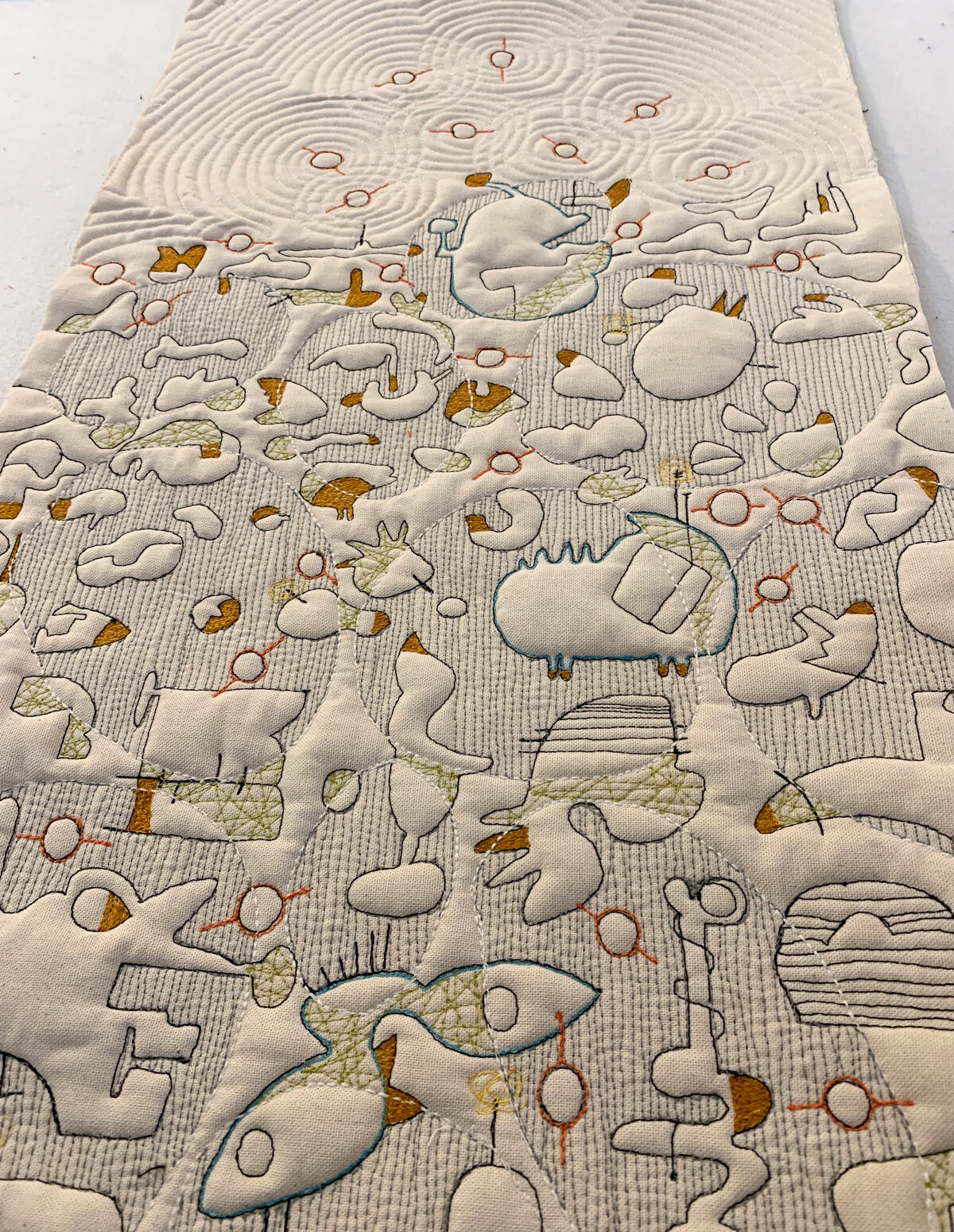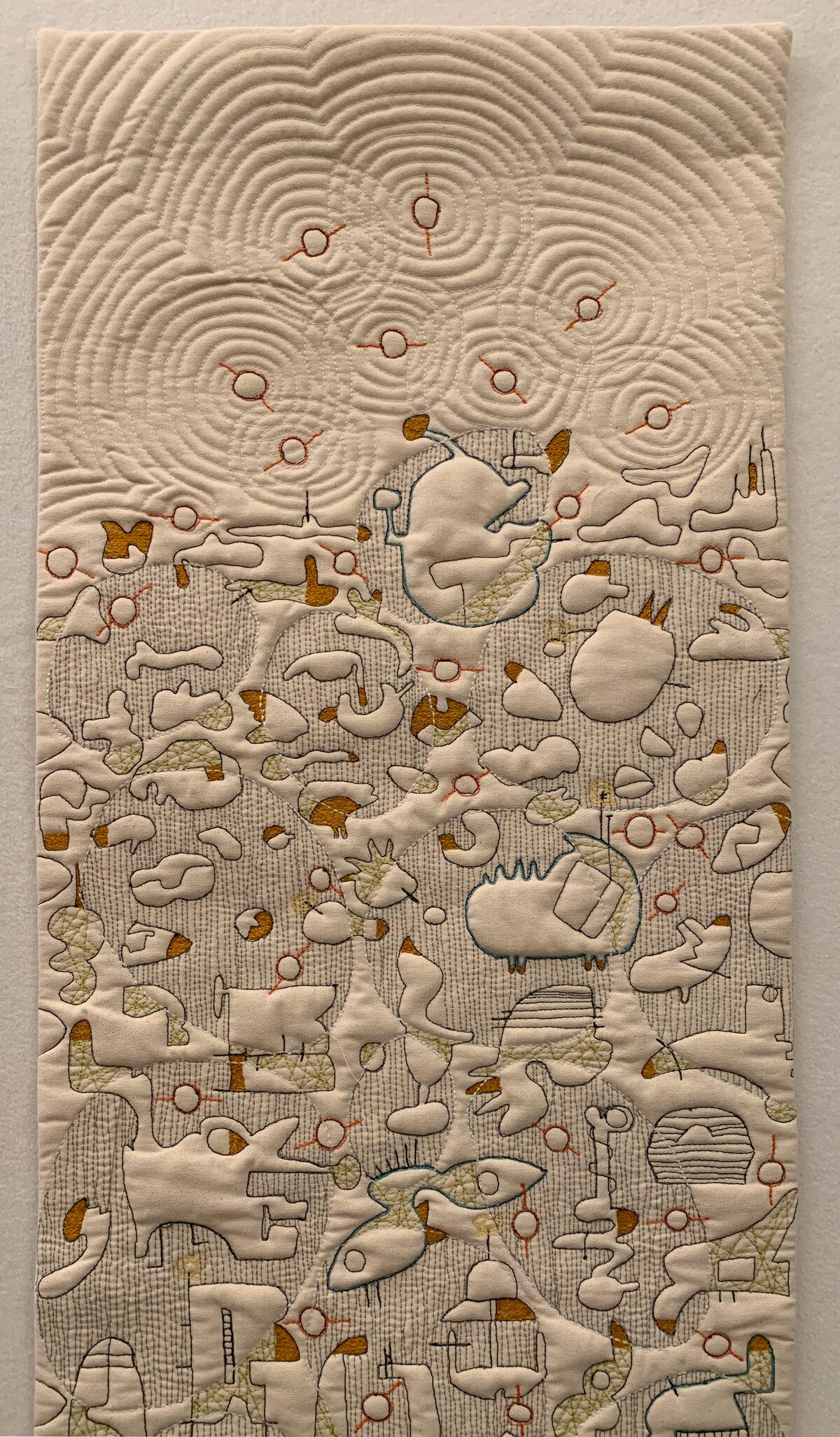I am reading Annals of the Former World by John McPhee. It’s not an easy book to read. It focuses on geological formations and geologists and time. Geologists read rock like we read books. McPhee travels across the United States with five different geologists who decipher the terrain as they travel. Many of the sentences begin with the words billions or millions of years ago. Deep time.
When I read books like this I have to slow down. I admit that I skim past words that are unfamiliar hoping that the author will let me in on the secret in future sentences. I also acquire new words. Like lithic and Eocene and physiographic and down wasting, folded-and-faulted, fatigued rock, incompetent rock and inequigranular fabric.
I love rocks.
Morph started with scraps of other quilts.
Thinking about the beginning of time and forces beyond our control I started working on Morph. The bag of scraps came out and I stitched them together.
The piece grew to metamorphic blob. Metamorphism, as I understand it, is actually a process by which minerals are formed through heat and pressure.
Morph, hand-stitching detail, Paula Kovarik
Geological processes take time. Lots of time. The details in a substrate can tell the story of millennium.
Morph, machine-stitching detail, Paula Kovarik
Morph, 3-dimensional form detail, Paula Kovarik
As I added details to the melange of fabrics I also added seams that molded the fabric into hills.
Morph, 50” x 46” x 6”, 2021, Paula Kovarik
Billions of years ago this little patch of land I sit on would be at the bottom of a shallow ocean in a different continent altogether. Only one thing is constant: change. Morph can morph. Turn it 90 degrees and the sags sag in a different way. Hang it upside down and the terrain folds to a new narrative.
The final piece speaks to the ideas I had while reading McPhee’s book but also to how I feel about emergence, transformation, bulging body parts and sagging sentiments.
This past year built a tower of insights for me. How about you? Tell me about your stories of transformation.
